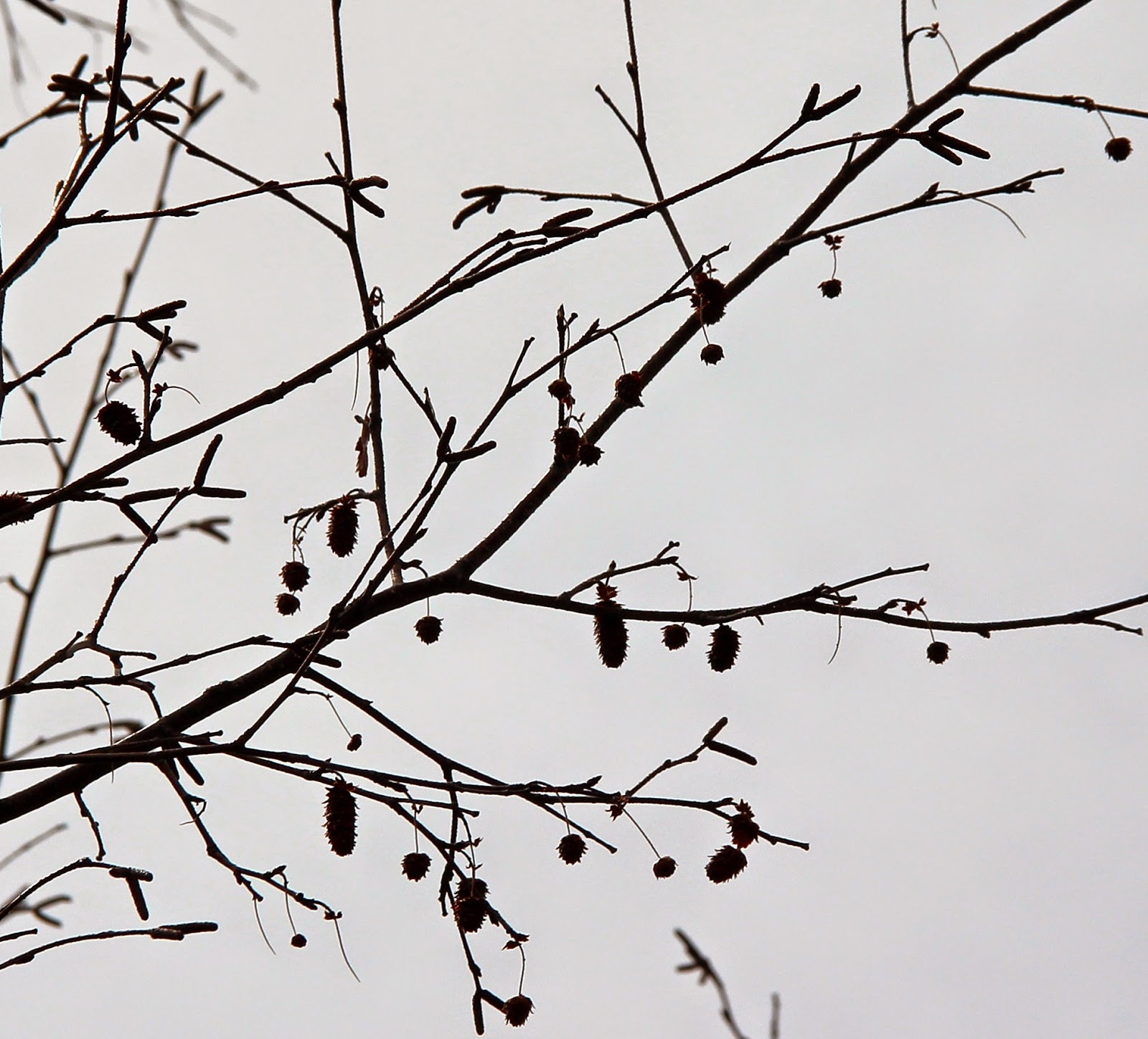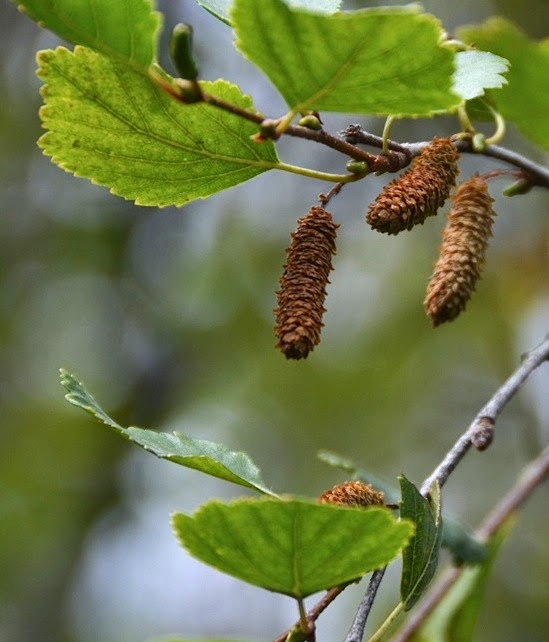 |
“Hillers trachyte is a pale gray paste with large white crystals of feldspar and crystals large and small of hornblende. This describes the variety at hand.”
|
This is one of the least eye-catching rocks in my kitchen. No one picks it up, ponders it, asks questions. Yet it’s special for me ... and for the history of geology. I found it one morning on the picnic table at my campsite, on top of yellowed sheets of paper with notes and sketches. They were not there the evening before.
I brewed a cup of coffee and sat down to read the mysterious missive. This is what I found [notes in italics are mine]:
The Henry Mountains are not a range, and have no trend; they are simply a group of five individual mountains, separated by low passes and arranged without discernible system. [here there was an arrow to the diagram above] ... they stand on the right bank of the Colorado River of the West, and between its tributaries, the Fremont and the Escalante.
Geological exploration had shown that they were well disposed for examination, and that they promised to give the key to a type of structure which was at best obscurely known. [emphasis added]
If the structure of the mountains be as novel to the reader as it was to the writer, and if it be as strongly opposed to his preconception of the manner in which igneous mountains are constituted, he may well question the conclusions in regard to it ... I can only beg him to suspend his judgement until the whole case shall have been presented.
It is usual for igneous rocks to ascend to the surface of the earth, there issue forth and build up mountains or hills by successive eruptions [arrow to diagram below]
 |
Mountain of Eruption
|
The lava of the Henry Mountains behaved differently. Instead of rising through all the beds of the earth’s crust, it stopped at a lower horizon, insinuated itself between two strata, and opened for itself a chamber by lifting all the superior beds. In this chamber it congealed, forming a massive body of trap. For this body the name “laccolite” (Greek: cistern and stone) will be used. [hmmm ... I thought the term was “laccolith”]
[arrow to sketch above] The simplest type of Henry Mt. structure is a lenticular mass of trap above which the strata are arched [this diagram looked very familiar, where had I seen it?]
or they have made these subterranean mounds at many different levels so as to produce a structure of which [arrow to sketch above] is an ideal cross section.
Contemporaneous and subsequent denudation have left the existing phenomena:
 |
| Mt. Ellsworth |
 |
| Mt. Hillers |
[there was one more sheet, and it was there that the author’s identity was revealed]
If these pages fail to give a correct account of the structure of the Henry Mountains the fault is mine and I have no excuse. G.K.G.
I was stunned!! "G.K.G." -- that's Grove Karl Gilbert, one of the greatest 19th-century geologists of western North America. That familiar diagram is his classic cross-section through a laccolith, from his study of the geology of the Henry Mountains. In fact, Gilbert had camped at this very spot at the southeast base of Mt. Hillers. Had he dropped his field notes? No, that couldn't be. He was last here 136 years ago. They must have been left on the table by some ghostly visitor in the night ...
 |
Grove Karl Gilbert in 1894; National Academy of Sciences Archives.
|
I reread the yellowed sheets, paying close attention to every detail. An hour passed unnoticed and by then the day was getting warm. But no matter. I loaded my pack and drove around to the south side of Mt. Hillers to hike up to the base. I wanted to see sandstone spurs, hogbacks, revet crags and trap for myself.
 |
Modern-day view of the south base of Hillers.
|
--- ✿ ✿ ✿ ✿ ✿ ✿ ✿ ---
In 1869, the great explorer and geologist John Wesley Powell was traveling down the Colorado River through today’s Utah. He spotted an isolated cluster of peaks to the west, which he called the Unknown Mountains. They would become the last range to be named in the Lower 48 States.
 |
| The Unknown Mountains from the air. |
 |
| View from Google Earth (click on image). Lake Powell (Colorado River) in southeast corner. |
Powell thought the Unknown Mountains looked like volcanos. This was of great interest because there was a debate raging as to whether volcanos were 1) “craters of elevation” or 2) craters built from piles of debris accumulated through repeated eruption (geology was still a young science). Even from a distance Powell could see these mountains were domed and had dark masses of lava-like rock, suggesting “craters of elevation.”
 |
Mt. Hillers from the west.
|
Five years later, Powell was in charge of the US Geographical and Geological Survey of the Rocky Mountain Region, and the Unknown Mountains had become the Henry Mountains, named for his physicist friend, Joseph Henry. Powell directed Grove Karl Gilbert to take an exploratory expedition into the Henrys and perhaps settle the question as to whether volcanos were craters of elevation or of debris. But the question was never answered, for Gilbert found no volcanos.
They left York, Utah, south of Salt Lake City, on June 20, 1875. It took 20 days to travel the 200 miles to the Henry Mountains, by mule. Trails ranged from good to unknown. On August 22, they established Camp 38 very close to today’s Starr Springs Campground, where I found the mysterious notes and rock.
 |
| The old Starr Ranch. The springs have long attracted humans; there's a BLM campground there now. |
Gilbert spent two weeks in the Henrys in 1875. He found no evidence of volcanic activity, and by the end of the visit was beginning to think about alternative models. He returned the next year and stayed for two months. When his report was published, the Henry Mountains became the type locality for a new geologic structure -- the laccolith. Gilbert used “lacune” in his early field books, but then chose “laccolite” as the formal name. Later he was persuaded to change to “laccolith” because “-ite” typically applies to rock types rather than structures.
Gilbert’s laccoliths were distinct from other igneous structures recognized at that time. Unlike volcanos, molten igneous material did not reach the surface. Nor did it solidify deep below, as did masses of granite and related rocks. Instead, magma was intruded into rock layers near the surface. Furthermore, the “trap” deformed the overlying strata -- a novel concept.
 |
| "Half-stereogram" of a laccolith showing deformed sedimentary strata above, from Gilbert's report. In his early field notes, he sometimes called these bubble or tumor mountains. |
The deformed sedimentary rocks on the south flank of Mt. Hillers are especially striking. "On this side a half dozen spurs show fragments of red rock as sketched ... inferior rocks tilted almost to the vertical and interspersed with dikes. Moreover these sandstone hogbacks seem to trend in a curve around the mountain as far as they extend.”
 |
| Field sketch of the south base of Hillers, showing prominent hogbacks (click on image to view). |
 |
| "Base crags of Hillers" from Gilbert's field notes. |
 |
| Base crags of Hillers from the air. Photo courtesy Jack Share of Written in Stone. |
 |
“revet-crags” and “bold spurs of trap” (dark rock near horizon)
|
 |
"inferior rocks tilted almost to the vertical"
|
We wandered among the revet crags and bold spurs of trap for several hours. They were extremely photogenic but it was getting hot. So we headed back down to the car, and drove east and north to Hanksville. With the Henrys in constant view, and Gilbert’s words and sketches bouncing around in my head, it was hard to keep my eyes on the road.
But while the Henry Mountains contribute almost nothing to our direct material interests, they offer in common with the plateaus which surround them a field of surpassing interest to the student of structural geology. The deep carving of the land which renders it so inhospitable to the traveler and the settler, is to the geologist a dissection which lays bare the very anatomy of the rocks, and the dry climate which makes the region a naked desert, soilless and almost plantless, perfects the preparation for his examination. -- G.K.G.
 |
| From "Map of the Henry Mountains by G.K. Gilbert. From a model in relief." (1880) |
 |
| Henry Mountains in southern Utah; click on image to view. |
Sources
Gilbert, G.K. 1880. Report on the geology of the Henry Mountains, 2nd ed. Dept. of the Interior, US Geographical & Geological Survey of the Rocky Mountain Region, Washington DC.
full PDF here
Hunt, C.B. 1988. Geology of the Henry Mountains, Utah, as recorded in the notebooks of G.K. Gilbert, 1975-76. Geol. Soc. Am. Mem. 167.
Share, Jack. 2011.
The Henry Mountains Laccolithic Complex on the Colorado Plateau at
Written in Stone ... seen through my lens





















































